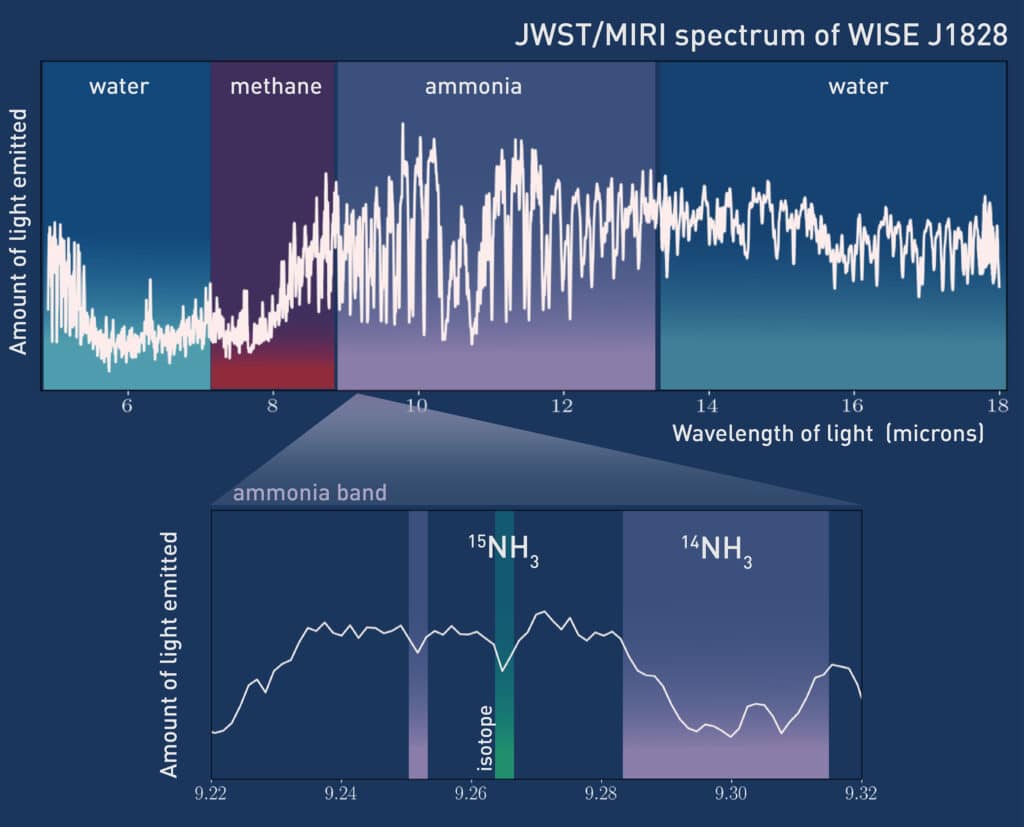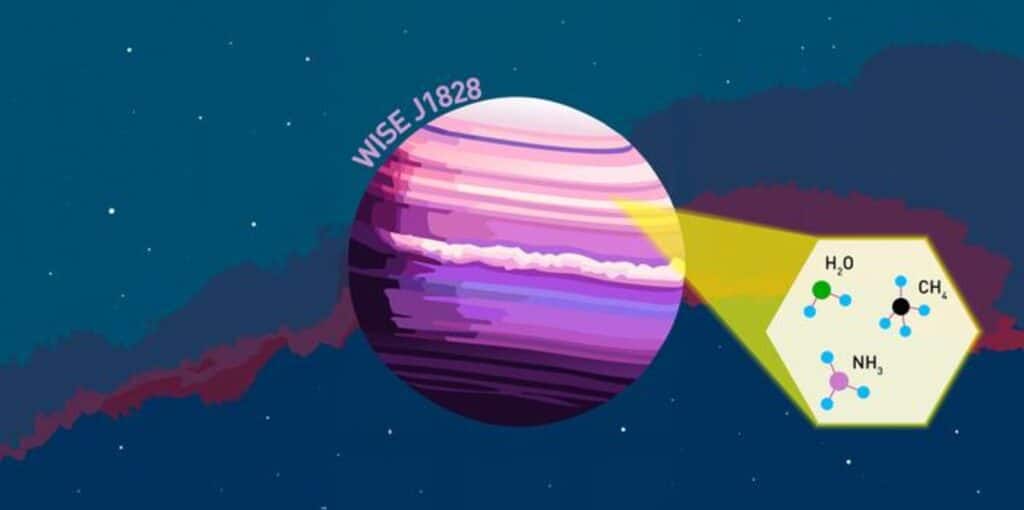An ammonia trail in space is unlocking secrets about how planets form. Researchers from ETH Zurich in Switzerland have successfully detected ammonia isotopes in the atmosphere of a cold brown dwarf named WISE J1828. This discovery provides a new diagnostic tool for studying the origins and formation of gas giants and exoplanets.
Isotopes and isotopologues, molecules that differ only in the composition of their isotopes, have long played essential roles in fields ranging from archaeology to medicine. They are even used to trace the age of bones and fossils. Now, scientists have harnessed these tools to delve into the mysteries of the cosmos.
Astrophysicists say ammonia can be measured in the form of the ratio 14NH3 to 15NH3, which are indicators that can be used to study star and planet formation. The new tool will help test different and known formation mechanisms for gas giants.
Brown Dwarfs and the Hunt for Ammonia
Brown dwarfs occupy a unique space between stars and planets, sharing similarities with giant gas planets. To investigate these intriguing celestial objects, researchers focused on WISE J1828, located 32.5 light years away in the constellation Lyra. This ultracold dwarf star, with an effective temperature of just 100 degrees Celsius, is too cold for hydrogen fusion to emit visible light, making it invisible to the naked eye.
To spot WISE J1828, researchers turned the mirrors of the James Webb Space Telescope (JWST) in its direction. The Mid-InfraRed Instrument (MIRI), equipped with the Medium Resolution Spectrometer (MRS), captured a spectrum of the brown dwarf’s atmosphere, revealing the presence of ammonia, water, and methane molecules with distinctive absorption bands. Ammonia, in particular, left its mark on the spectrum by causing attenuation of the signal between 9 and 13 μm.

Ammonia isotopologues, molecules containing different nitrogen isotopes (14N and 15N), were also discerned spectroscopically. When 15N replaces 14N in ammonia molecules, it creates a unique spectral signature that indicates the presence of 15NH3.
A New Diagnostic Tool for Planet Formation
The ratio of 14NH3 to 15NH3 measured in the atmosphere of WISE J1828 provides valuable insights into the formation of gas giants and exoplanets. On Earth, there are 272 atoms of 14N for every atom of 15N. However, the brown dwarf exhibited a remarkable ratio of 670, indicating that it accumulated less nitrogen-15 during its formation than Earth and other planets like Jupiter.
This discrepancy hints at a different formation process for WISE J1828. While most planets form through nuclear accretion, where gas and dust gradually accumulate, the low 15NH3 content in the brown dwarf’s spectrum suggests a star-like formation through gravitational collapse. This gravitational instability could play a pivotal role in the formation of gas giants, especially those with large orbits around their host stars.
Furthermore, the 14NH3-to-15NH3 ratio appears to vary depending on the distance between a gas giant and its star, as shown by simulations. This suggests that the ammonia ratio could indicate planetary accretion of ices in specific regions, providing astronomers with an additional tool to study directly observable exoplanets.
The study is published in the journal Nature.












